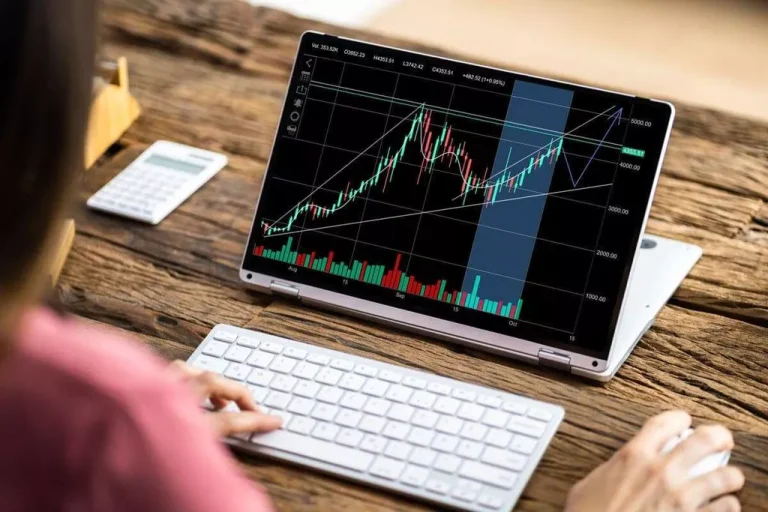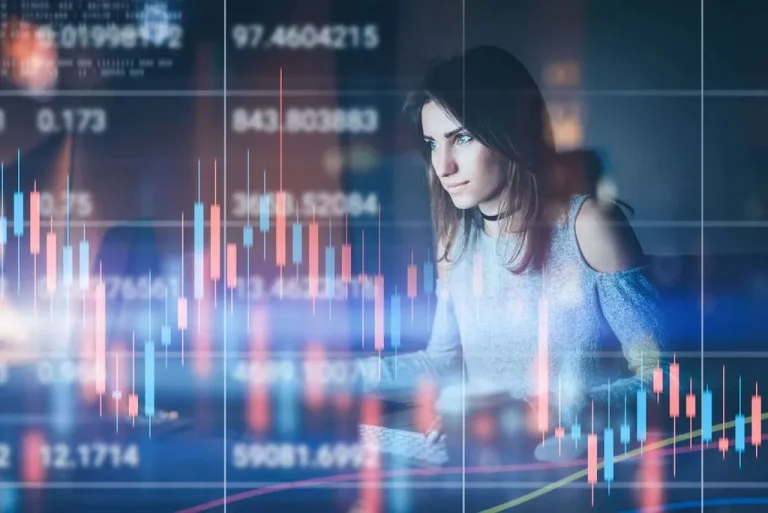Content
Always approach trading with caution, a well-thought-out strategy, and an understanding of the risks involved. Automated trading bots connect to crypto exchanges and execute orders based on premade settings. To get started, you must pick up a platform, copy a strategy from an expert, build a strategy from scratch, or use presets. Connecting automated bots to an exchange often involves API keys (Application Program Interface). Algorithmic trading can be used for, among other fast trading platform things, order execution, arbitrage, and trend trading strategies.
How Blockchain Can Revolutionize Trade Finance
A small mistake in coding or strategy could lead to substantial losses, even when properly tested, because past performance does not guarantee future results. Today, however, platforms like MetaTrader 4 (MT4) make algo trading more accessible with advanced strategy building, automation and backtesting tools that don’t require advanced coding skills. Profit-seeking algorithms aim to maximise returns by identifying inefficiencies, patterns or statistical arbitrage opportunities in the markets. Often used in high-frequency trading (HFT) strategies, these algorithms are often less transparent https://www.xcritical.com/ than execution algorithms, as traders or firms may keep their proprietary strategies secret. Algorithmic trading, often referred to as ‘algo trading’, uses computer algorithms to automatically execute positions.
- Yes, autotrading may be subject to specific regulations depending on the jurisdiction.
- You should be prepared to handle losses and work continuously to improve your trading skills and strategies.
- Automated trading systems also protect you against negative market cycles, which often occur when you expect it, thus preventing significant losses.
- Algorithmic trading works by using predefined rules and computer algorithms to automatically execute trades based on market data.
- Since computers respond immediately to changing market conditions, automated systems are able to generate orders as soon as trade criteria are met.
Before You Use Automated Trading Systems
Automated trading involves leveraging algorithmic trading to create, buy and sell orders on the stock markets or on exchanges. It is essentially a computer programme based on some predefined rules that aids both trade entries and exits. Automated trading takes into account technical analysis as well as mathematical and statistical calculations. Unlike other algorithms that follow predefined execution rules (such as trading at a certain volume or price), black box algorithms are characterized by their goal-oriented approach. Black box systems are different since while designers set objectives, the algorithms autonomously determine the best way to achieve them based on market conditions, outside events, etc. Although appealing for a variety of reasons, automated trading systems should not be considered a substitute for Digital asset management carefully executed trading.
Risks and Challenges of Automated Trading
People often correlate losses with emotional trading or becoming too personally invested in the outcome of a trade. Over-involvement can lead to over-thinking and then to over-trading, which in turn may lead to loss. In the discipline of trading, it can help to stick with a consistent strategy. Automated, or algorithmic (algo), systems across all asset classes execute pre-set orders that can exclude the influence of human emotion or market swings.
Best AI Homework Helper Tools to Get Instant Homework Help

For sophisticated traders, algorithmic trading offers powerful advantages in speed, efficiency, and emotionless discipline. However, algorithms lack human insight and remain prone to hidden errors and overoptimization. For algo trading to keep growing, developers must emphasize robustness, adaptability and prudent risk management. When used properly, algorithmic trading can no doubt benefit certain trading strategies and complement human traders. Yet full automation is unlikely to completely take over trading any time soon. In the rapidly evolving world of financial markets, automated trading systems have garnered significant attention.
Monitor your algorithm regularly to ensure it’s functioning properly and make adjustments if market conditions change. Bots handle routine tasks and enable trades to run constantly, even without the trader. Algobot tools are practical, time-saving tools that track markets consistently.
This process helps in evaluating the effectiveness of a strategy before deploying it in live markets. By analyzing past performance, traders can refine and optimize their strategies for better results. Significant developments in technology have disrupted almost every industry, and online trading is no different. According to Forbes, more than 1,300 hedge fund managers use technology like automated trading systems for most of their trades to stay profitable and prevent losses due to wild guesses. With an automated trading system, traders can make educated decisions on whether to buy or sell assets.
While HFT can enhance market liquidity, it has also been criticized for contributing to market volatility. With automated trading, it is possible to trade multiple markets and instruments simultaneously. This diversification can help in spreading risk and reducing the impact of adverse market movements on the overall portfolio. Algo trading is an innovative method of trading that uses algorithms as a pre-defined set of instructions.
Automated trading uses algorithms or software to execute trades based on pre-set rules, such as technical indicators, price levels, or specific conditions. Automated trading systems offer a range of benefits, including speed, efficiency, and emotion-free trading. However, they also come with challenges such as technical failures, over-optimization, and regulatory risks.

In the rapidly evolving world of financial markets, automated trading has emerged as a powerful tool for investors, enabling them to execute trades with speed, precision, and efficiency. Whether you’re a retail investor or a large institution, automated trading can help you optimize your strategies and remove the emotional component from trading. In this blog, we’ll dive deep into the mechanics of automated trading, explore its pros and cons, and provide tips for getting started. Trading robots in online trading bots have become the new trend in the trading world since they enable traders to execute various tasks automatically and make sound financial opportunities. Using Algobot, traders can acquire tools for better trading accuracy and fewer trading hours.
These bots calculate risks and the number of assets to be traded at a given time. Large teams join powers to create reliable and reward-yielding algorithms, so newbie traders can use those later on. Usually these traders partner up with platforms to yield steady results to the whole community, getting paid in return. Any user has access to its full trading history, net worth, losses, success/failure trading rate, and more. Instead of learning how to trade, you can use ready-to-go solutions like Copy Trading or strategy presets.
Before embarking on the journey of automated trading, there are several critical aspects you need to reflect upon. Familiarizing yourself with the intricacies of the system, starting with uncomplicated strategies initially, and comprehending your preferred method are all vital steps. These are basic criteria to consider when making an automated trading program. The more complex the system, the more criteria, and factors need to be considered.
One of the key features of automated trading systems is their ability to execute trades at a much faster pace than human traders. This is particularly beneficial in high-frequency trading, where speed is crucial in capturing fleeting market opportunities and maximizing profitability. Automated trading offers a range of benefits, from increased speed and efficiency to removing emotional bias from trading decisions. However, it also comes with challenges, such as technical failures and the potential for over-optimization.
For example, you can input precise market entry and exit orders, as well as risk management settings into your automated trading systems. Since computers respond immediately to changing market conditions, automated systems are able to generate orders as soon as trade criteria are met. Getting in or out of a trade a few seconds earlier can make a big difference in the trade’s outcome. As soon as a position is entered, all other orders are automatically generated, including protective stop losses and profit targets. Markets can move quickly, and it is demoralizing to have a trade reach the profit target or blow past a stop-loss level—before the orders can even be entered. While automation minimises manual effort, periodic monitoring helps ensure your strategy adapts to changing market conditions.
Expert Advisors are powerful plugins often used on platforms like MetaTrader 4 and 5. These tools handle complex tasks such as identifying trends, managing risk, and executing trades automatically. High-frequency trading is a subset of automated trading that involves executing a large number of orders at extremely high speeds. According to a study by the TABB Group, HFT accounted for approximately 50% of U.S. equity trading volume in 2020.
